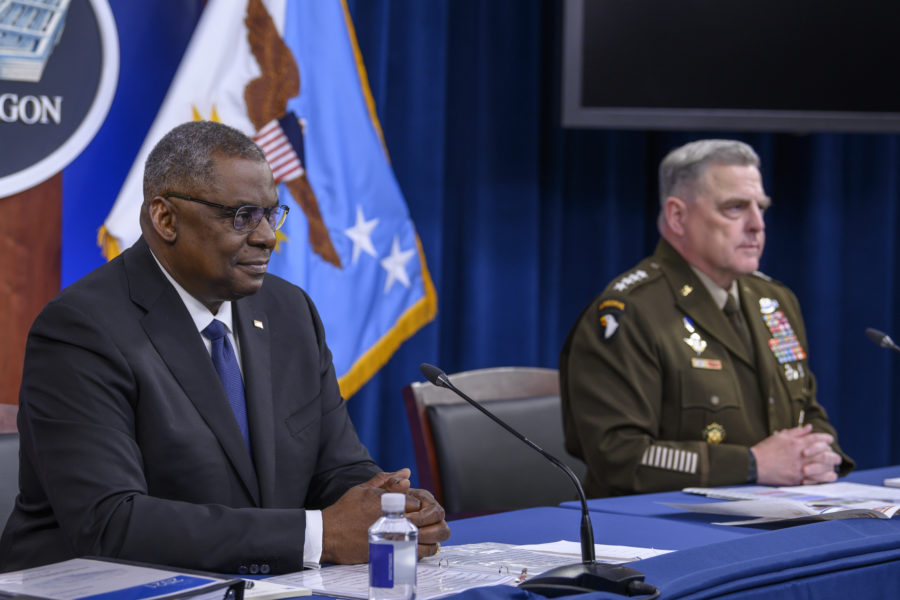The first budget request of the Biden administration, to be released May 28, will trade off aircraft and other capabilities not relevant in future fights in exchange for the “largest-ever” request for research and development, with a particular focus on what is needed to compete against China, top Pentagon leaders told lawmakers May 27.
Defense Secretary Lloyd J. Austin III told members of the House Appropriations defense subcommittee the budget will “create the right mix of capabilities to defend the nation and deter any aggressors.” Austin would not provide specifics until the budget rolls out but said the Pentagon needs to work with individual services to retire equipment that might be relevant now but won’t be in the future.
The budget has “substantial investments in the modernization of the nuclear enterprise, missile defeat and defense, Navy forces, long-range fires, and the largest-ever request for [research, development, test, and evaluation] for the development of technologies,” Austin said. “So our effort, again, is to make sure that we have the ability to leverage quantum computing, to begin to leverage [artificial intelligence], space-based platforms. Not only begin to leverage them, but to network them in ways that they’ve never been networked.”
The White House announced in April that the budget would include $715 billion for the Pentagon, with a total of $753 billion for national defense.
Austin said the Pentagon has “taken a hard look” at White House guidance and will use its funding request to ensure it is “focused on acquiring the right kinds of capabilities that we need to be relevant in the future fight.”
This tradeoff for the Air Force is expected to mean cuts to legacy planes such as KC-135s and MQ-9s—cuts that some lawmakers have already come out against because combatant commanders regularly call for more intelligence, surveillance, and reconnaissance.
Air Force Magazine previously reported that the Air Force plans to ask Congress to retire 421 legacy aircraft through 2026, replacing them with just 304 new fighters, so it can shift savings toward acquiring new systems such as the Next-Generation Air Dominance fighter later this decade and a new Multi-Role fighter, called MR-X, in the 2030s. However, many of those changes are likely to be implemented in 2023, following the completion of USAF’s tactical aircraft study, which will determine the right mix of fourth- and fifth-generation aircraft, Chief of Staff Gen. Charles Q. Brown Jr. has said.
Austin said future investment “puts us in a good place, and what it requires us to do is work with the services and take a hard look at those capabilities that will not be relevant in the future fight, and really begin to no longer invest in those capabilities … and focus on those things that we know we’ll need.”
The driving force behind the shift is China’s increased capabilities and intent to compete with the U.S. The budget will include funding for a proposed Pacific Deterrence Initiative, along with money for technologies relevant in the Asia-Pacific.
Chairman of the Joint Chiefs of Staff Gen. Mark A. Milley, testifying with Austin, said China has shown it is advancing rapidly, though it is not more capable in the region.
“They are a very, very significant competitor to the United States,” Milley said. “They are not yet our equal, but their intent is to be our equal.”
